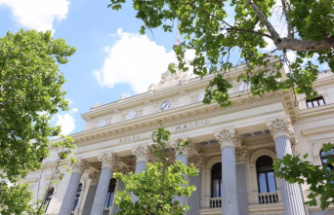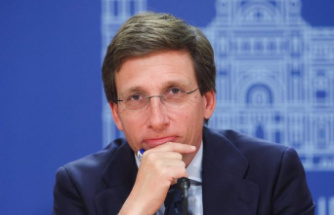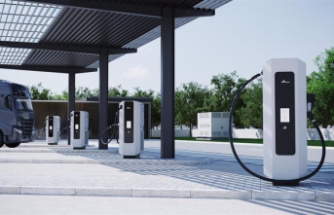"We will repair our city centers and rebuild our highways, our bridges, our tunnels, our airports, our schools and our hospitals. And we're going to put millions of people to work," certified Donald Trump during his victory speech on November 9, 2016. But between the failure of the repeal of Obamacare and the success of the adoption of a recast tax in the country two years ago, this original promise was quickly relegated to the background until today. Under pressure in recent months in the face of a population that cares for the aging infrastructure of his country, the elected democrats and the u.s. president have finally found a point of agreement.
" READ ALSO - Donald Trump is launching a major plan of modernization of the infrastructure
on Tuesday, Donald Trump and the democrats have agreed on a program of massive investment for infrastructure in the country, which will also cover the roads, bridges, energy resources, and the high-speed internet. 2.000 billion will be mobilized over 25 years to renovate the infrastructures in loss of speed in the United States. "We agreed on a figure that is very, very good: 2.000 billion for infrastructure," said the leader of the democrats in the Senate, Chuck Schumer at the end of a meeting at the White House. The leader of the democrats in Congress Nancy Pelosi, for its part, praised a plan "significant and bold". To improve access to health care and infrastructure, "we can work with the president even if we have difficulties in other areas", she stated.
The negotiations, which, however, far from completeFor democrats, the implementation of such a program of renovations can demonstrate that the party does not harness only to develop surveillance surveys on the finances of the american president. For Donald Trump, this extensive investment programme is a godsend, at the edge of the american elections of 2020, in order to prove that he has lived up to its political commitments. But if the project seems to be finally on the right track, the negotiations are, however, far from complete.
on the one hand, a meeting will be held in three weeks so that Donald Trump can present the solutions of financing of this ambitious programme. On the other hand, in order that it may see the light of day, it will have to convince the Senate to a republican majority to release the funds necessary. Last year, the president had submitted without success to the Congress a plan investment of 1.500 billion for infrastructure, including $ 200 billion of federal funds to stimulate spending of the local governments, States and private entities on a decade.
" READ ALSO - The candidate of Trump at the central Bank in the turmoil to of the about sexist
Regarding the funding of the program, the American Society of Civil Engineers (ASCE) recommends, for its part, to increase the federal tax on fuels. The latter being fixed at 18.4% per gallon since 1993. However, since 2013, several States have increased their fuel taxes in order to collect funds for the maintenance of their infrastructure. While California and South Carolina have made in the past two years, other States such as Michigan have so far rejected the proposed increases.
The United States spends two times less than the european countries for their infrastructureAccording to data from the world economic Forum, while the european countries spend on average 5% of their GDP to fund their infrastructure, the United States does not spend for their share of 2.4%. In the country, the relevant sectors employ approximately 14 million american workers, or 11% of the total force of work. The United States have not undertaken the major project of renovation since the Eisenhower administration. As a result, a large part of the motorways, waste treatment facilities, or energy systems, desperately needs to be renovated and modernized. The systems currently in place were built decades ago, and many experts argue that their state weighs in on the economic development of the country.
Transport, bridges, roads, internet, schools, parks, potable water, or wastewater, 12 of the 16 categories of infrastructure in the United States are considered "poor" or "at risk" by the American Society of Civil Engineers (ASCE). In 2017, the ASCE has thus given the score of D+. According to a report by the civil aviation us (FAA), 80% of airports in the country suffer from problems of congestion and could soon reach once per week, at the end of the presidential term of Donald Trump, the equivalent of congestion of the day of Thanksgiving. The delays and cancellations of flights, as well as the long queues in the airports in the country cost each year over $ 35 billion to the u.s. economy, according to the ASCE.
Bridges deficient, poor roads and public transport insufficientthe Other important component of the country's infrastructure, many of the bridges are also considered "at risk" by the American Road & Transportation Builders Association. In its annual report released in 2018, based on an analysis of data from the ministry of Transport, the association said that 47.052 of 616.087 United States bridges are "structurally deficient and in poor condition", and that more than one-third needs to be repaired.
in The United States, about one-third of roads in urban and 14% of rural roads are also considered in poor condition. The ASCE indicates that it should be so close to 836 billion dollars to repair roads and bridges in the country, according to a report by the u.s. department of Transportation. Moreover, according to the ASCE, only 51% of u.s. households can go in a grocery store in their area by using the public transport. These are being used more and more although widely under-financed. According to the report, it would have to be about $ 90 billion to address the backlog in the projects of transportation networks. This cost is expected to reach 122 billion by 2032.
schools judged to be in a fairly good state or bad statein Addition to the transport systems, the pipes that carry drinking water will also require the need of important funding. According to the report of the ASCE, a million of pipes are used for nearly 100 years. The system aging increases the prevalence of water cuts, which also means that about 2,000 billion gallons of treated water are lost every year.
Finally, the ASCE estimates that the schools public does not receive the necessary funding to maintain their buildings, and that 24% of them are in a fairly good state or in bad state.
Date Of Update: 03 May 2019, 00:00












